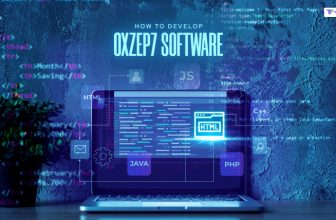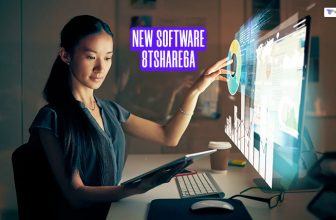
In today’s competitive landscape, manufacturing businesses like yours need every advantage they can get to stay ahead of the curve.
One crucial tool that can help achieve this is Enterprise Resource Planning (ERP) software. But with so many different options available, choosing the right ERP system for your specific needs can be daunting.
This guide will walk you through the key steps involved in selecting the right ERP software for your manufacturing business. By understanding your requirements, researching available options, and carefully considering your budget and implementation process, you can confidently choose the solution that will propel your company toward success.
Read on to learn more.
Define Your Manufacturing Company’s Needs And Goals
Before diving into the world of ERP options, it’s critical to clearly define your manufacturing business needs and goals. This will form the foundation for your entire selection process.
Ask yourself questions like:
- What are your company’s biggest operational challenges?
- What areas do you and your team want to improve?
- What specific functionalities are essential for your manufacturing business?
- What are the various industry-specific requirements?
- What’s your company’s budget for an ERP system?
- What’s your team’s timeline for implementation?
By answering the abovementioned questions, you can create a clear roadmap for your cloud-based manufacturing ERP selection journey. This will help you identify the features and functionalities that are most important for your business and avoid getting bogged down by irrelevant options.
Research And Compare Different ERP Solutions Available
Once you have a comprehensive understanding of your needs, it’s time to start researching ERP solutions that fit the bill.
There are numerous resources available to help you with this research, such as:
- Online review sites and comparison platforms;
- Industry publications and analyst reports;
- Case studies and testimonials from other manufacturing businesses;
- Vendor websites and demos; and so on.
As you research different options, be sure to pay close attention to the following key factors:
- Functionality: Does the system offer all the features and functionalities your manufacturing business requires?
- Scalability: Can the system adapt to your future growth and changing needs?
- Integration: Can the system integrate with your existing software applications?
- Deployment Options: Is the system available on-premise, cloud-based, or as a hybrid solution?
- Implementation And Support: Does the vendor offer comprehensive implementation and ongoing support services?
- ERP Costs: What’s the total cost of ownership, including licensing fees, implementation costs, and ongoing support?
By carefully evaluating each option based on these criteria, you can narrow down your choices and identify a few potential solutions that are a good fit for your business.
Pick The Right ERP Vendor
Once you have shortlisted a few potential ERP solutions, it’s time to start evaluating the vendors behind them.
Take into consideration the following factors:
- Company Reputation And Experience: Does the vendor have a good reputation in the industry?
- Customer Service: Does the vendor have a strong track record of providing excellent customer service?
- Financial Stability: Is the vendor financially stable and likely to be around for the long term?
- Implementation Expertise: Does the vendor have a team of experienced professionals who can help you implement the system successfully?
- Ongoing Support: Does the vendor offer comprehensive ongoing support services, such as training, updates, and troubleshooting?
Picking a reliable and experienced vendor is crucial for the success of your ERP implementation. By partnering with a vendor you can trust, you can ensure that you get the most out of your investment.
Plan And Implement Your ERP System
Once you have chosen the right ERP software and vendor, it’s time to start planning and implementing your system.
This involves a number of key steps:
- Data Migration: Moving your data from your existing systems to the new ERP system.
- System Configuration: Customizing the system to meet your manufacturing business’ specific needs.
- User Training: Training your employees on how to use the new system.
- Go-live: Launching the new system and transitioning to its use.
It’s crucial to have a detailed plan in place to ensure a smooth and successful implementation. This will help you avoid disruptions to your business operations and maximize the benefits of your new ERP system.
In Conclusion
Selecting the right ERP software can be a complex process; nonetheless, it’s a worthwhile investment that can significantly improve the efficiency and profitability of your manufacturing business. By following the steps outlined in this guide, you can make an informed decision and select the solution that will help your company reach its full potential.
Remember, the key to success lies in clearly defining your manufacturing business needs, researching your options, and choosing a reliable ERP vendor.
Read Also:






